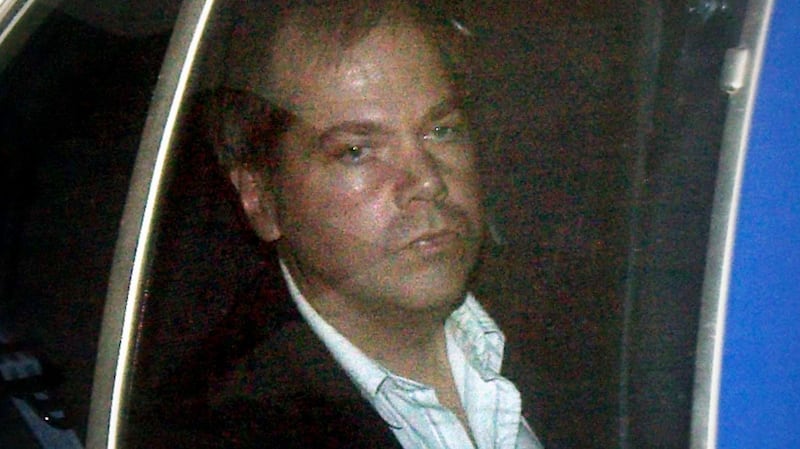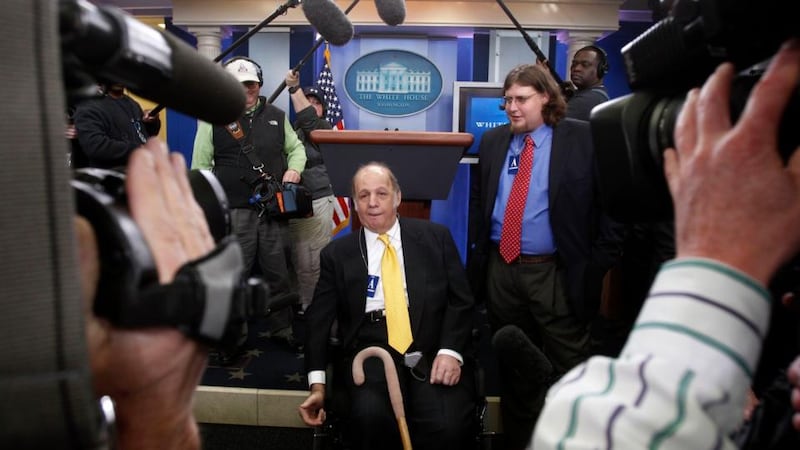At 67, a man who has lived under restrictions for 40 years – most of them in incarceration – is preparing to take his guitar and go on the road.
More than 28,000 people have signed up to his YouTube channel, where his song videos have been viewed more than 800,000 times.
His first gig, planned for New York early next month, is reported to have sold out, although concerts in other cities have been cancelled.
Controversy surrounding performers is nothing new in the music industry. But as he prepares to embark on his new career as a singer/songwriter, John Hinckley jnr has a backstory that will generate headlines wherever he goes. Hinckley is the man who shot and almost assassinated Ronald Reagan.
Tommy Tiernan to star in new Kevin Barry play as part of Abbey programme
Large and private Killiney five-bed with elegant interior on a third of an acre for €2m
Will I lose out on UK pension because I didn’t live there for three consecutive years?
Real Madrid open up old Liverpool wounds with Trent Alexander-Arnold move

On March 30th, 1981 the then US president had just delivered a speech to delegates at a conference of the trade union federation AFL-CIO at a Washington hotel.
As he moved towards his car, a gunman stepped towards him from a group of waiting reporters and fired six shots.
The final bullet ricocheted off of the presidential limousine, striking Reagan under the left armpit. The president’s wounds were not noticed until he began to cough up blood; he was taken to hospital and underwent life-saving surgery. The bullet had narrowly missed his heart but damaged a lung and his ribs, causing internal bleeding. He could very easily have died.
Three others, White House press secretary James Brady, secret service agent Timothy McCarthy and police officer Thomas Delahanty were hit and wounded in the attack. Brady was permanently disabled and his death in 2014 was attributed by a medical examiner to the gunshot wounds he had received 33 years earlier.
On Wednesday, four decades after his attempt to assassinate the president, Hinckley is to receive unconditional release.
Tried in 1982 for the gun attack, he was acquitted by a jury on the grounds of insanity, and was sent to a psychiatric hospital in Washington where he remained for more than three decades.
In 2016 a judge ruled that he could live with his mother subject to certain conditions.
These restrictions included officials having access to his electronic devices, email and online accounts; a ban on going to locations where individuals were under the protection of the Secret Service and a requirement to provide three days’ notice if he wanted to travel more than 75 miles from his home in Virginia.
His mother died in 2021 and over time the terms governing his release have been relaxed. Last month a court agreed to lift final supervision arrangements that had been in place on Hinckley from June 15th.
US district Judge Paul Friedman said: “John Hinckley tried to kill the president of the United States. He came very close to doing so.”. But “without losing sight of what he did 40 years ago, he has been the most scrutinised person [in America’s mental health system] ... living under a microscope as none of us have”.
The judge said that Hinckley had proved after four decades of supervision that he “should be ready to get on with his life”.
“I am confident Mr Hinckley will do well in the years remaining to him,” he said.
Federal prosecutors had raised no objection to the final supervision order being ended, effectively allowing for Hinckley’s unconditional release.
His lawyer, Barry Levine, said doctors had confirmed his client did not and would not pose a danger to himself or to others. He repeated apologies to the Reagan family and those who were injured in the gun attack in 1981.
However, the decision to free Hinckley has not been without criticism.
In a statement on its website, the Ronald Reagan Presidential Foundation & Institute said it was “saddened” to hear of the decision to unconditionally release Hinckley, “the man responsible for the attempted assassination of President Reagan, a shooting that gravely wounded three other brave men”.
“Contrary to the judge’s decision, we believe John Hinckley is still a threat to others and we strongly oppose his release. Our hope is that the Justice Department will file a motion with the court leading to a reversal of this decision,” it said.

In 2020 a court had permitted Hinckley to begin displaying his artwork, writings and music under his own name. He sings and plays guitar and uploads covers and original songs to his YouTube channel.
In a post last year he said he was seeking to start a record label, and in a tweet earlier this month he said: “A big thank you to everyone who helped me get my unconditional release. What a long, strange trip it has been. Now it’s time to rock’n’roll.”
Hinckley was 25 when he shot Reagan and the three other men with with six exploding “Devastator” bullets from a .22-calibre pistol.
The jury’s verdict in his trial in 1982 caused outrage among many Americans and ultimately led to changes in the law, making the insanity defence more difficult to claim. The case also focused attention on obsession, the dark side of America’s celebrity culture.
Hinckley was a troubled individual, estranged at the time of the shooting from his wealthy family. He watched on several occasions Martin Scorsese’s Taxi Driver, the classic1975 film about urban decay, and began to identify with the character of the alienated Vietnam veteran Travis Bickle, played by Robert De Niro.
The film also featured a young Jodie Foster and Hinckley became fixated with her. He followed her to Connecticut where she had started studying at Yale University in 1980. He began leaving messages, poems and letters on her doorstep and later started to call her.
The film featured an attempted assassination of a presidential candidate in New York and it is believed that the attempt on the life of Reagan was part of a plan by Hinckley to impress Foster.
Hinckley had been arrested earlier, in Nashville in October 1980, on the day that Jimmy Carter was campaigning in the city in advance of the presidential election. However, the Secret Service, which is charged with protecting the US president, was not informed.
Five months later, with Reagan now in the White House, he carried out his planned gun attack as the president left the Hilton Hotel in Washington.












